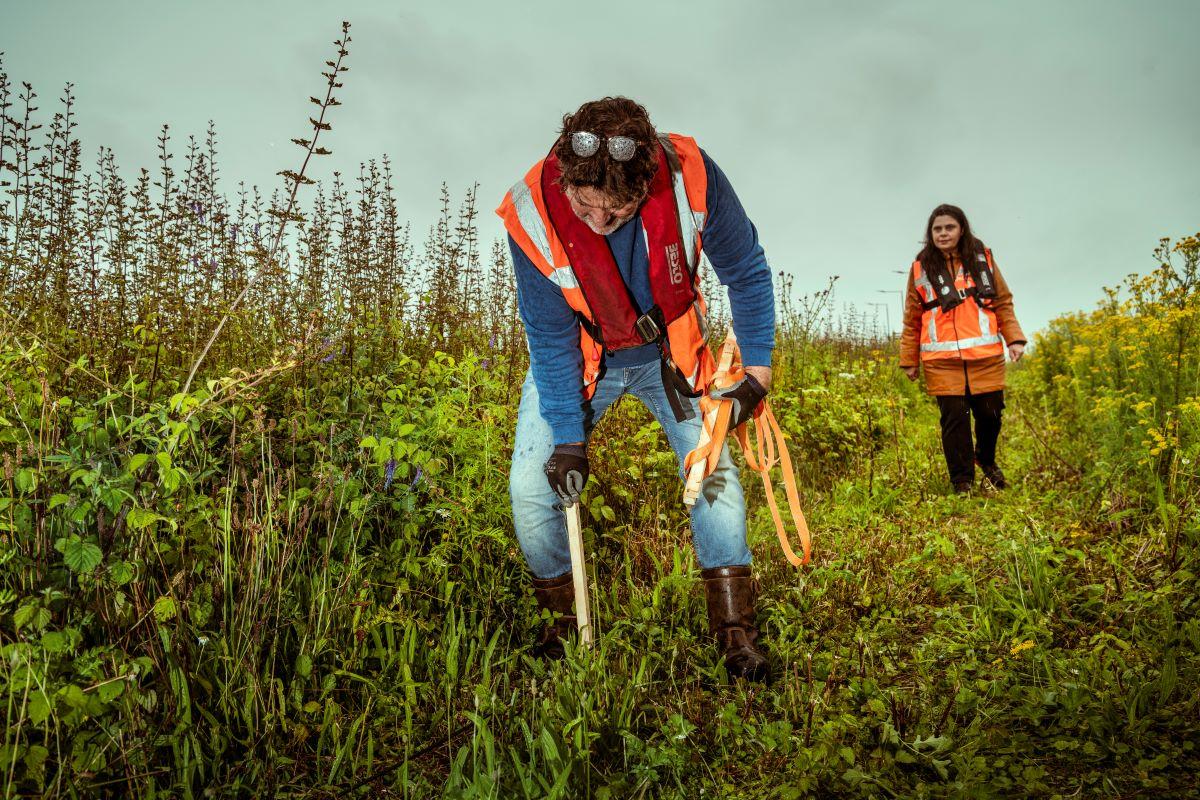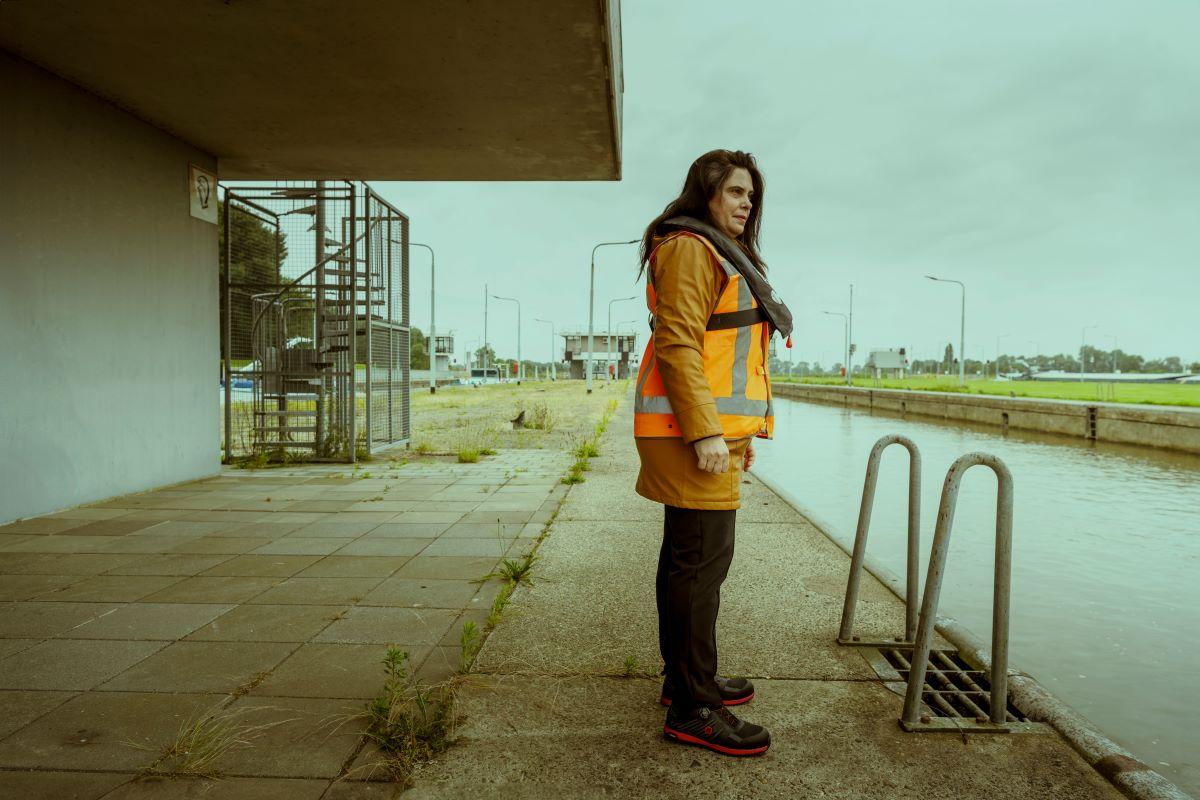Increasing resilience of hydraulic structures
How do we make our waterways and associated infrastructure fit for the future? Changes in inland navigation require new designs of locks, for instance, if they are to be more resistant to collisions. At the Sambeek lock, Deltares is mapping the sailing speeds of inland vessels for Rijkswaterstaat, which can use it to adjust design requirements.

In the pouring rain, Deltares researchers Migena Zagonjolli, Jelle Molenaar and Dennis Peters carry measuring equipment to the outer harbour of the Sambeek lock. Along the eastern quay, they place lasers in watertight boxes and cables to record the speed of passing barges. They are conducting this research on behalf of Rijkswaterstaat.

Outdated data
This lock complex in the Meuse, on the border of North Brabant and Limburg, dates from 1929 and is passed by 23,000 inland vessels every year. The purpose of the measurements is to better design locks, weirs and other hydraulic structures against collisions, says Migena.
"The last time measurements of sailing speeds were done dates from the 1990s. Since then, the fleet has changed. For example, shipping vessels have become larger and faster. Collision with closed gates of a lock can lead to major damage to the lock gates, the lock structure and to the ship, but even to the complete loss of the water-retaining function. The risk of collisions is an important aspect of the safety of the locks. Rijkswaterstaat therefore needs new user information to decide how to tackle renovation, maintenance or new construction of locks in a smarter and more efficient way."

Automated measurements
Employees of Rijkswaterstaat used to spend long days at the locks to get information about the speed of passing ships. Deltares has now designed an automated measurement system for this purpose. Migena explains: "Three sets of two lasers measure the time at which a ship passes the laser at fixed locations along the quay in the outer port and immediately register this in a text file. The equipment is powered by a solar panel. This measurement method saves time and money. This allows us to calculate the sailing speed at a few places at the same time in the outer port."
By combining these speed data with anonymised information from the shipping traffic system, new probability calculations can be made of approach speeds and the impact of a collision of an inland vessel on closed lock gates. Migena: "With the help of the new data, we can also validate the existing knowledge and the use of the data from the automated information system in order to be able to make reliable analyses in the future."
Migena and her colleagues are now only observing outside the lock, for the full story measurements would also have to be carried out in the chamber.

Risks hydraulic structures
In the coming years, Rijkswaterstaat will be working on replacing and renovating the existing infrastructure, including the locks. The current weirs and locks in the Meuse are at the end of their lifespan and will be renewed or replaced as part of Replacement and Renovation programme of the national government.
Migena: "We always consider our hydraulic structures as reliable, but things can still go wrong.” “Since the construction of these structures, both in the Netherlands and worldwide, a lot has changed.” She lists climate change, other operational practices such as from local and manual to automatic and remotely controlled, and changed demands of users. Not only has it become busier on the waterway, but the type of cargo has also changed. In addition, conflicting regulations or developments from different sectors further complicate the situation.
"You can clearly see that in recent collisions such as at the bridge in Baltimore or, more recently, at the weir in Grave. That's why we need to map out weak spots on our waterways, just like we do with levees."
Improved designs
Incidents like the one in Baltimore are rapidly highlighting related risks. "The urgency is felt more now," says Migena. "Calamities such as collisions with locks have major economic and social consequences. As a result, certain shipping routes are unavailable for months due to repairs. This hinders optimal transport of goods, which means that articles won’t make it to the shops or become more expensive. As a driver, you also suffer from it, because you have to make a detour. More knowledge about collision risks helps us to design better for the future."

A better feel with fieldwork
The lock in Sambeek was chosen as the measurement location because ships do not have to wait long to enter here, according to Migena. "Also, the lasers and cables don't get in anyone's way and there is little chance of interference with the laser beams here." Unfortunately, Migena and her colleagues had to make some adjustments on the spot for more accurate measurements. For example, a laser has been moved, the power supply has been improved and high vegetation on the banks has been trimmed.
Migena: "It's a pity, but it's part of the job, certain environmental factors are harder to visualize 'behind your desk'. The overview is best when on location. As a researcher this is the value of fieldwork. It gives you a better feel for your subject. By having more knowledge of the environment, you can improve your research and also get better results."


